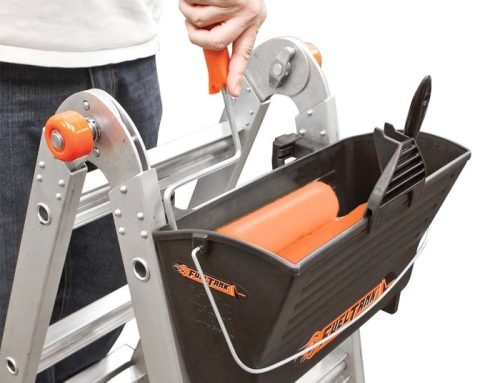A 61-year-old woman from New Hampshire, USA, had a scary experience recently when her pool ladder broke leaving her stranded in the water for three hours. Leslie Kahn had been enjoying a dip in her back garden when the ladder broke as she tried to exit the pool. She injured her knee in the accident and could not get out of the pool unaided. After realising she was stuck, she used a pool skimming net on a long pole to reach her iPad, which was on a recliner near to the pool. She posted a message on social media, alerting friends and neighbours to her plight and was rescued by neighbours shortly before the police arrived, also having been alerted thanks to her Facebook message.
Sadly, it is not uncommon for people to incur injuries or become stranded (perhaps on a roof or in a swimming pool) as a result of a ladder breaking, but this is an easily avoidable problem. Ladders of any type should be regularly inspected and while this is a legal requirement in a workplace, it is all too often overlooked in a domestic setting. Domestic ladder users also often use these pieces of equipment alone, without anyone else present or even aware that they are working at height. Again, in a working situation it is unlikely that any employees will be required to use a ladder alone and many companies have a policy that states no one should use a ladder unsupervised, or at least that they should be regularly checked on. The combination of a lack of ladder maintenance and inspection, coupled with using potentially faulty equipment in isolation is a dangerous mix, as Leslie Kahn knows all too well.
Domestic ladder users can learn a lot from the professional world about safe ladder use and the importance of regular inspections, and the investment of five minutes, every few months in checking over the integrity of your ladder could mean the difference between a safe and successful job or a life changing injury. The important things to check are the rungs, stiles and any locking mechanisms used to secure a step ladder, extension ladder or any other type of ladder with moving parts. Moving parts should be lubricated yearly, even if the ladder has not been used, in order to prevent rust and seizing. Any residual grease should be wiped off properly, to prevent slipping when the ladder is in use. When setting a ladder up it is always vital to check that moving parts are all working properly and that locking mechanisms are working. Attempting to fix a broken mechanism with tape or cable ties may be tempting, just so you can get the job done, but this is not safe and instead you should use a different ladder.
Rungs and stiles should be checked over for signs of damage or wear and tear. Dented sections have very little structural integrity and could collapse, so it is not safe to use a ladder with dented box sections. Loose joints between the stiles and rungs could mean the rungs breaking away when any weight is put on them, so while it might seem stable without anyone on it, there could be trouble ahead when someone steps on to it. It is not worth taking the risk of using a damaged ladder and if you are unsure whether it is safe, it's best to assume it is not and to use a different ladder.
Putting off a job until there is someone there to help or supervise is just common sense. There are not many jobs that cannot wait a few hours or days, so going ahead solo is an invitation for disaster. Even if the person helping cannot foot the ladder, or is not conversant in the use of ladders, it can make all the difference having someone to get help should it be needed. Ideally you will have someone who can stabilise the ladder and help with the job at hand, but any help is good help when using ladders.
As with Leslie's case, and many other tales of broken ladder woes demonstrates, checking ladders for signs of weakness and replacing them, is simply a matter of common sense preventative maintenance that could be catastrophic if it is not done.






Leave A Comment
You must be logged in to post a comment.